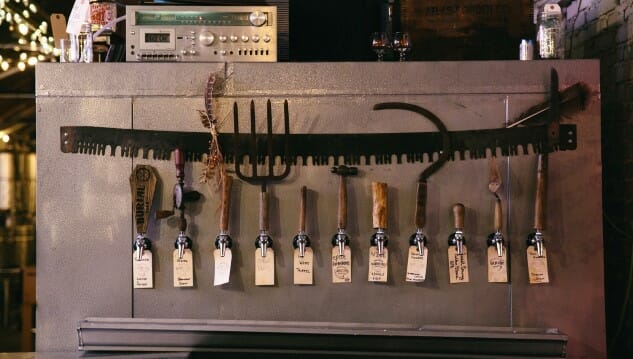Burial Beer Co. on the Holy Craft Beer Triumvirate: IPA, Saison and Stout
Photos via Burial Beer Co.
Asheville’s Burial Beer Co. wears a fairly heavy crown, these days. It’s no secret that since the acquisition of Wicked Weed by Anheuser-Busch InBev in the spring of 2017, a lot more attention has turned toward one of North Carolina’s other most sought-after breweries. It’s also no secret that many beer geeks had already considered Burial to be “the best” brewery in Asheville even before the buyout was announced, with their relatively smaller size and grittier aesthetic helping to add street cred when compared to the shine and polish of the larger Wicked Weed. Living in Atlanta, I’ve seen the brand’s popularity swell firsthand, as cans of Surf Wax IPA or Skillet Donut Stout have been greedily snatched up off store shelves around me since they were introduced to the market. They’ve also performed well in Paste’s monthly series of blind style tastings, even taking home #1 in our blind tasting of 116 saisons back in June.
Recently, while making a weekend swing up through Asheville with friends, my path crossed with Burial once again. The last time I stepped into the small space, just a handful of yards from other classic Asheville breweries such as Green Man, it was 2015 and the brand still felt like a new kid on the block. This has since visibly changed—with yet another new generation of Asheville breweries on the rise, Burial is now a savvy veteran of the scene. The original taproom location has now become the experimental lab of head brewer Timothy Ryan Gormley, with the larger-scale brewing happening at a second production brewery off-site. But there’s plenty that hasn’t changed—it’s still crowded; the beer is still good; there’s still plenty of inexplicable (unless you inquire) Tom Selleck tributes wherever you look.
As my group stopped by Burial on a weekend afternoon, I pulled Gormley (a co-founder, alongside Doug and Jess Reiser) aside for a quick conversation on beer styles, beer philosophy and Burial’s unique aesthetic, along with the evolution of the Asheville beer scene following the purchase of Wicked Weed. It follows below.
Paste: The Burial philosophy toward the brewing program as a whole; is that primarily a product of your whim or a combination of you, Jess and Doug?
Gormley: I think it was definitely a combo of the three of us; we all added different elements to what the culture and visual aesthetic of Burial is, and what kind of beers we make.
Paste: By the way, let me just say that as a horror geek, I appreciate the sheer amount of death and gore so often found on your labels.
Gormley: Laughs Yeah, that’s true. It ties in nicely with our brewery name of course, but it’s mostly from the mind of our artist David Paul Seymour, who has been working in the metal and psych rock music industry for a long time. I think we’re his first non-music client, so he’s used to making a lot of album covers.
Paste: You just don’t expect to see a decomposing rabbit on a can of pilsner, ya know?
Gormley: That was one of the first labels we ever did (Shadowclock Pilsner) with what we call the “light side and the dark side” of the can, where it’s clearly meant to be the same image where time has passed. The rabbit does not age well.
 The grisly label in question.
The grisly label in question.
Paste: So, there’s a lot of breweries that do a bunch of IPAs, or a bunch of stout, or a bunch of saison, but you guys sort of specialize in those three things at once—that’s how I think of the Burial beer lineup, anyway. Why those three? Because it seems to me if you’re making a Deathly Hallows-sort of insignia, those would be three good representations of American craft beer.
-

-

-

-

-

-

-

-

-

-

-

-

-

-

-

-

-

-

-

-

-

-

-

-

-

-

-

-

-

-

-

-

-

-

-

-

-

-

-

-









































